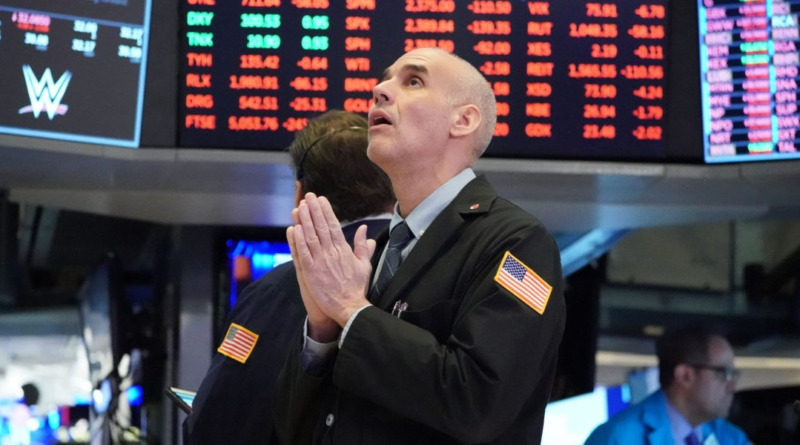Investors seek more protection from a market downturn
A bumpy week for the S&P 500 Index prompted long-complacent traders to look at the hedges they’ve ignored for months.
The demand for broad market insurance plunged to multi-year lows in the first quarter as US stocks posted a series of fresh highs despite growing geopolitical tensions and uncertainty over interest rates. This week, that changed as the desire to protect against a downturn increased by a number of measures.
“People are starting to recognize that we’ve skated through these first three months of the year — all in the face of interest rates going up, in the face of pushing out the probabilities of cuts,” said Joe Mazzola, director of trading and education at Charles Schwab & Co. “Something’s got to give at some point.”
The Cboe Volatility Index, known as the VIX, closed at its highest level since November on Thursday, before dipping Friday as US stocks climbed. The index — a measure of the 30-day implied volatility of the S&P 500 based on out-of-the-money options prices — still held above its 200-day moving average.
Since late March, investors have been slowly tacking on hedges, pushing the cost of bearish three-month put options to the biggest premium over bullish contracts since mid-January. Those positions added onto insurance that’s gotten more attention this year — tail-risk hedges that protect against a major crash, rather than a minor correction.
Some investors are using spreads, which offer less protection against a downturn but cost much less than outright contracts. Susquehanna International Group called out recent put spreads that ready for drawdowns in the S&P 500, the tech-heavy Nasdaq 100, and the Russell 2000 — often seen as a benchmark of small cap health.
Belmont Capital Group’s Stephen Solaka, who manages hedging strategies for wealth management firms and institutions, said that more clients have been asking for portfolio hedges tied to both equities benchmarks as well as individual tech firms.
“That’s a function of pricing and the run-up that we’ve had,” he said. According to Solaka, the demand makes sense: after the S&P 500’s blistering rally, investors might want to shield their winnings. “It’s natural.”
These days, trader angst centers on a bunch of unknowns: geopolitical tensions, the upcoming US presidential election, first-quarter earnings reports, and — of course — central bank policy. That final wildcard came to the forefront last week after Federal Reserve Chair Jerome Powell said bankers need not rush to ease borrowing. The Fed’s Neel Kashkari further soured the mood when he raised the possibility of no rate cuts in 2024.
A spike in put volume tied to iShares iBoxx High Yield Corporate Bond ETF (ticker HYG) signaled that investors are preparing for the Fed to disappoint again. The hedges tied to the fund would likely pay off should the Fed’s tight policy push the rate-sensitive fund lower.
“If you think about what’s been driving some of the real macro volatility, it has been interest rates,” said Alex Kosoglyadov, managing director of equity derivatives at Nomura Securities International, noting that fewer cuts than markets expect could catalyze stock moves. “The Fed is a risk that could take the market lower.”
Options positioning mirrors the action in the equity market, which has favored established megacaps over riskier stocks. Growth and quality exchange-traded funds reaped massive inflows compared to value funds’ meager intake throughout March.
Demand for protection boils down to trader expectations, according to Rohan Reddy, director of research at Global X Management. With mounting consensus for a soft landing, unwelcome surprises can beget a bit of angst in even the most fearless of bull markets.
“There is, of course, a real possibility things could get bumpy, in which case there may be more desire to protect,” said Reddy.




